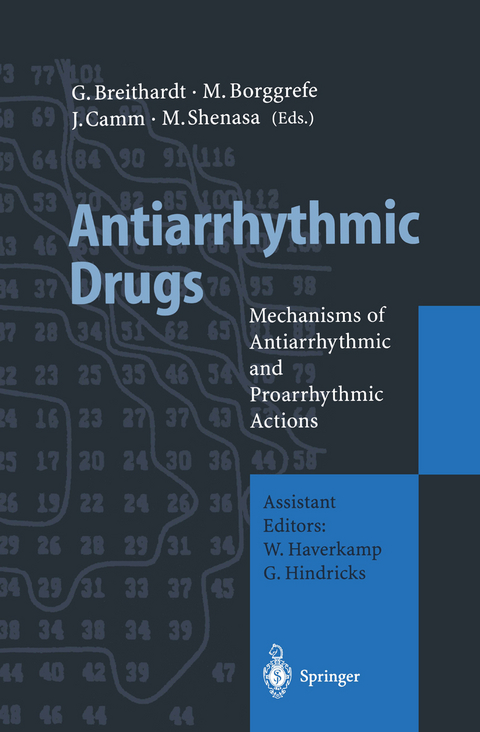
Antiarrhythmic Drugs
Springer Berlin (Verlag)
978-3-642-85626-6 (ISBN)
Basic Mechanisms of Antiarrhythmic Drug Action.- Sodium Channel Blockade as an Antiarrhythmic Mechanism.- Pharmacology of T and L type Ca2+ Channels in Cardiac Tissue.- Molecular Biology and Ion Channel Biophysics: Their Role in Rational Pharmacological Antiarrhythmic Therapy.- Selective Pharmacological Modification of Repolarizing Currents: Antiarrhythmic and Proarrhythmic Actions of Agents that Influence Repolarization of the Heart.- A Shift from Class to Class III Drugs in the Medical Treatment of Arrhythmias: Wishful Thinking?.- Use Dependence and Reverse Use Dependence of Antiarrhythmic Agents: Pro-and Antiarrhythmic Actions.- Modulation of Antiarrhythmic Drug Action by Disease and Injury.- Interaction of Transient Ischemia with Antiarrhythmic Drugs.- Management of Patients with Sustained Ventricular Tachyarrhythmias: Differnt Clinical Studies, Different Patients.- Antiarrhythmic Drug Action: Modulation by Disease and Injury.- Reentrant Excitation: Pharmacological Interactions.- Pharmacological Modulation of Reentrant Excitation in Experimental Models.- Reentry in Clinical Arrhythmias: Mechanisms Responsible for Antiarrhythmic Drug Efficacy.- Variability of the Arrhythmogenic Substrate: Drug Influences.- Experimental Models for the Assessment of Antiarrhythmic and Proarrhythmic Drug Action: Traditional and Newer Models.- Influence of the Autonomic Nervous System on the Action of Antiarrhythmic Drugs.- Role of Drugs in Torsade de Pointes and Triggered Activity.- The Study of Pharmacokinetics and Pharmacodynamics as a Tool for Understanding Mechanisms of Antiarrhythmic Drug Action.- Electrophysiologic Effects, Clinical Efficacy and Antiarrhythmic and Proarrhythmic Effects of Sodium Channel Blockers in Patients with Ventricular Tachyarrhythmias.- Antiarrhythmic VersusProarrhythmic Effects of Class III Agents.- "Novel" Antiarrhythmic Drugs.- Electrophysiologic Properties and Antiarrhythmic Effects of Adenosine and Adenosine Triphosphate.- Magnesium-Electrophysiological Effects, Antiarrhythmic Properties and Clinical Applications.- Future Perspectives.- The Classification of Antiarrhythmic Drugs: How do we Educate the Scientist and the Clinician?.
| Erscheint lt. Verlag | 19.8.2012 |
|---|---|
| Mitarbeit |
Stellvertretende Herausgeber: W. Haverkamp, G. Hindricks |
| Zusatzinfo | XII, 410 p. 300 illus. |
| Verlagsort | Berlin |
| Sprache | englisch |
| Maße | 155 x 235 mm |
| Gewicht | 592 g |
| Themenwelt | Medizinische Fachgebiete ► Innere Medizin ► Kardiologie / Angiologie |
| Medizin / Pharmazie ► Medizinische Fachgebiete ► Pharmakologie / Pharmakotherapie | |
| Schlagworte | Arrhythmia • Drug • Drug Action • Drugs • heart • Interactions • Ion channel biophysics • Kinetics • Pharmacodynamics • Pharmacokinetics • pharmacology • sudden cardiac death |
| ISBN-10 | 3-642-85626-8 / 3642856268 |
| ISBN-13 | 978-3-642-85626-6 / 9783642856266 |
| Zustand | Neuware |
| Informationen gemäß Produktsicherheitsverordnung (GPSR) | |
| Haben Sie eine Frage zum Produkt? |
aus dem Bereich


